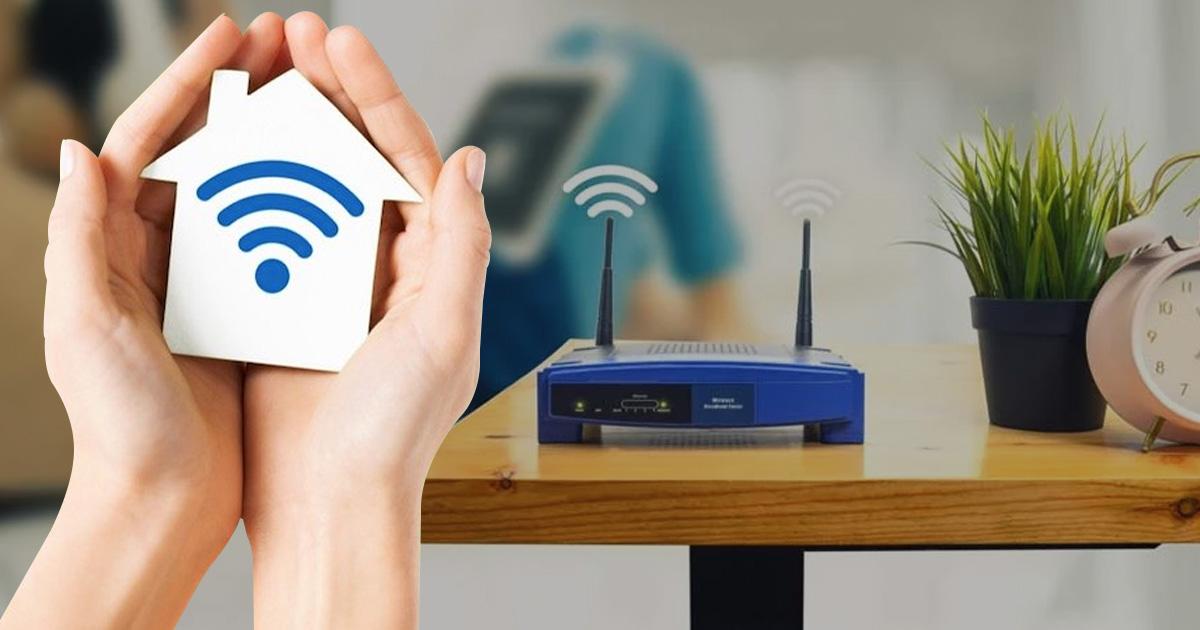5 Things You Can do to Increase Wi-Fi Signal Through Walls

In today’s world, strong and reliable WiFi is essential, especially for homeschooling. Understanding how to boost WiFi signals through walls can significantly improve your internet experience. Whether you’re facing concrete, brick, or other types of walls, boosting your WiFi signal ensures uninterrupted online learning for your children.
How important is WiFi for homeschooling?
WiFi is essential for homeschooling, providing access to online resources, virtual classrooms, and interactive learning platforms. A dependable internet connection allows children to attend live classes, submit assignments, and access educational materials without interruptions. Strong WiFi supports video calls, online research, and educational apps, all of which are vital for effective homeschooling.
Educational websites, e-books, and online libraries are crucial resources for homeschoolers, providing immediate access to a wide range of information and learning materials. Virtual field trips and online museums provide interactive and engaging ways for students to explore topics without leaving home. Online assessments and quizzes help track progress and ensure understanding of the material.
WiFi facilitates communication with teachers, tutors, and peers, helping to build a sense of community and collaboration. Group projects and discussions can continue seamlessly with a strong internet connection, making learning more dynamic and interactive. Reliable WiFi is essential for modern homeschooling, guaranteeing that educational activities proceed smoothly without connectivity problems.
Can WiFi go through walls?
WiFi signals can penetrate certain walls, but not all. The capacity of WiFi to go through walls varies based on the material and thickness of the wall. Here’s how different types of walls impact WiFi signals:
- Drywall and Wooden Walls: WiFi signals can pass through these materials relatively easily, though the signal may weaken slightly. Homes with drywall or wooden walls typically experience less interference with WiFi signals, making these materials less problematic for maintaining strong connectivity.
- Brick Walls: Brick walls can significantly weaken WiFi signals, reducing their strength and speed. Getting WiFi through brick walls requires additional measures, such as using WiFi extenders or powerline adapters to boost the signal. These solutions can help mitigate the signal loss caused by the dense nature of brick.
- Concrete Walls: Concrete is one of the toughest materials for WiFi signals to penetrate. The signal can weaken dramatically, often requiring solutions to boost the WiFi signal through concrete walls. Using powerline adapters, placing routers strategically, or setting up a Mesh WiFi system can help improve signal strength in homes with concrete walls.
- Metal and Mirrors: These surfaces can reflect WiFi signals, causing interference and weakening the connection. Large appliances, metal furniture, and mirrors can create dead zones where the WiFi signal is significantly reduced. Relocating these items or adjusting the router’s position can help minimize the impact of reflective surfaces on your WiFi signal.
Is there a way to boost the WiFi signal through walls?
Boosting WiFi signals through walls involves several strategies. Here are five effective ways to enhance your WiFi signal:
1. Relocate Your Router
Placing your router in a central spot can enhance the signal across your home. Position it in an open space, away from thick walls, to let the signal move more freely. Elevating the router on a shelf can also be beneficial. This method can increase signal strength by 20-30%. Ensuring the router is not obstructed by furniture or appliances can further enhance its reach.
2. Use WiFi Extenders
WiFi extenders, also known as repeaters, can amplify your signal by capturing the existing signal and rebroadcasting it. They are particularly useful for getting WiFi through brick walls and other dense materials. Placing extenders strategically around your home can extend the signal reach by up to 50%. These devices can be an affordable and easy-to-install solution for homes with multiple rooms or floors.
3. Upgrade Your Router
Older routers might have difficulty meeting current WiFi needs. Switching to a newer model with advanced features such as dual-band or tri-band technology can greatly improve signal strength and coverage. A new router can improve signal strength by up to 40%. Look for routers with strong antennas and high-speed capabilities to meet the increasing demands of streaming, gaming, and multiple device connections.
4. Powerline Adapters
Powerline adapters transmit internet signals through your home’s electrical wiring. Plug one adapter near your router and another in the room needing a better signal, then connect your device with an Ethernet cable. This method can effectively boost WiFi signals through concrete walls, as the signal travels through the wiring rather than air. This method can boost signal strength by 30-40%, offering a dependable connection, especially in rooms distant from the router.
5. Mesh WiFi Systems
A Mesh WiFi system includes several devices that collaborate to provide comprehensive WiFi coverage throughout your home. These devices, or nodes, are placed in different rooms, ensuring that even areas with thick walls receive a strong signal. Mesh systems are highly effective, providing up to 100% improvement in signal strength across large homes. They offer seamless connectivity as you move from room to room, ideal for larger households with multiple users.
What else can you do to increase WiFi strength?
Apart from boosting signals through walls, there are other ways to enhance overall WiFi performance:
- Minimize Interference: Keep electronic devices such as microwaves and cordless phones away from your router because they can disrupt the WiFi signal. Other wireless devices, such as baby monitors, can also cause interference, so positioning your router away from these items can help maintain a strong signal.
- Secure Your Network: Make sure your WiFi is secured with a password to block unauthorized access that could slow down your connection. Use strong, unique passwords, and consider updating your network security settings regularly to protect against potential threats.
- Update Firmware: Update your router’s firmware regularly to take advantage of the latest performance enhancements and security patches. Manufacturers frequently release updates that improve the router’s functionality and fix any security issues.
- Use Ethernet Cables: Using Ethernet cables for stationary devices like desktop computers offers a more stable and faster connection than WiFi. This approach can also free up wireless bandwidth for other devices, enhancing overall network performance.
- Optimize Router Settings: Optimize your router’s settings for better performance. This involves choosing the best WiFi channel, tweaking the transmission power, and enabling Quality of Service (QoS) settings to prioritize bandwidth for essential applications.
Enjoy a strong WiFi Signal in your home
Improving your WiFi signal is key for a smooth homeschooling experience. Knowing how to boost WiFi signal through walls can make a big difference, so your children can learn without any interruptions. Whether you have brick, concrete, or other types of walls, the tips in this guide provide practical solutions. Relocating your router or getting a Mesh WiFi system can help create a strong and reliable internet connection for homeschooling. Try these methods and enjoy a strong, steady WiFi signal throughout your home.

